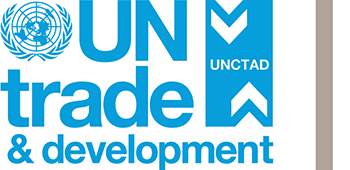This note reports work to prepare a baseline scenario and two alternative scenarios for analysis of finance and development issues facing developing countries in the aftermath of the COVID19 crisis. The scenarios have been prepared using an updated version of the world databank (WD 13.3) covering the period 1970 to 2019 and a modified version of the UN Global Policy Model (GPM 6.82) expanded to represent eleven developing countries that are not members of the G20. The databank and model have been updated to reflect estimates of the economic and financial impact of the pandemic as of end-November 2020.[1]
The baseline assumption, here described as 'Business As Before', reflects established pre-COVID trends and impacts of the COVID crisis on trade, investment, employment, budget deficits and debt on the assumption that governments strive to recoup budget losses and bring debt down towards pre-crisis levels through the 2020's.
The first alternative scenario adds major policy changes aimed at achieving a global carbon-neutral transformation by mid-century. Innovations in this scenario, 'Market-Driven Decarbonization', include accelerated trends of energy efficiency and reduced carbon-intensity with taxes and other regulatory mechanisms cutting demand for fossil fuels (which are the main source of emissions) to a level at which production would scarcely remain profitable.
The third scenario, here termed the 'Alternative Development Scenario', includes three elements that in combination could help to overcome development problems associated with the first two scenarios.
(i) Concerted Decarbonization through a programmed transition to achieve an orderly reduction in fossil fuel extraction and distribution, based on stable producer prices. The aim of this initiative is to match reductions in demand and supply of fossil fuels without violent fluctuations in the price at which fossil fuels are traded.
(ii) Regional Development, which promoting closer economic cooperation among economies in five geographic regions (South America, Africa, South-East Asia, West and Central Asia, and South Asia). The purpose is to advance development-oriented ‘de-globalization’, reducing economic and financial dependence on developed economies.
(iii) Containment of Financialization to avoid destabilizing build-up of external financial liabilities as growth of developing economies recovers and goes forward in coming decades.
To facilitate evaluation of longer-term consequences the scenarios have been extended to 2040, allowing time for implementation of policy changes that have far-reaching consequences for business and daily life and taking account of delayed, S-curve responses as people and institutions take advantage of new products and services and costs fall.
[1] Initial updates of the databank and model with historical data for 1970 to 2019 and projected outcomes for 2020 and 2021 were prepared in July 2020 under a prior contract.
